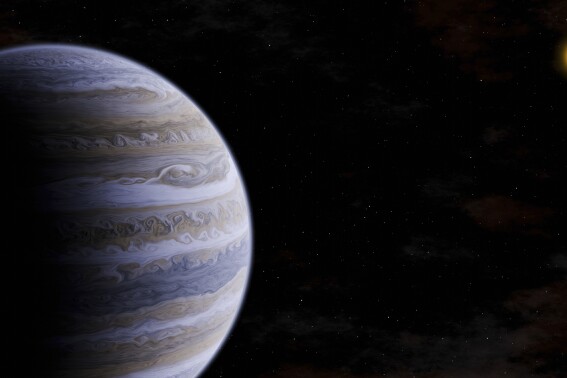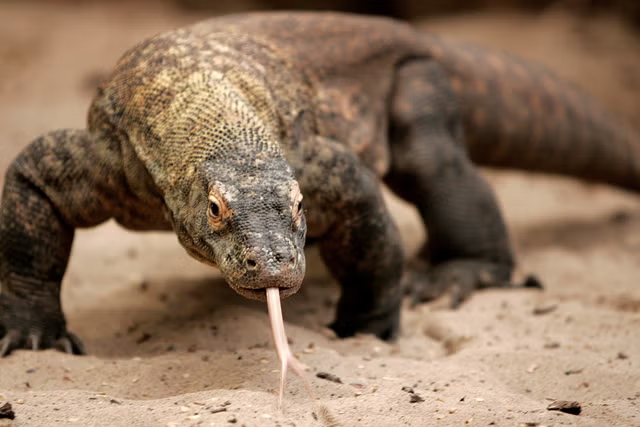Paleontologists have unraveled a mystery surrounding a bizarre, prehistoric "taco-shaped" creature that has puzzled researchers for more than a century, a study has revealed.
The roughly 8-inch-long animal, known as Odaraia alata, was first described all the way back in 1912 based on remains found in the Burgess Shale—a renowned fossil-bearing deposit located in the Rockies of British Columbia, Canada.
This deposit dates back to around 508 million years ago during the Cambrian period, which saw a major diversification of animal groups. To date, Odaraia is only known from the Burgess Shale and is one of the deposit's most iconic creatures.
Efforts to classify the enigmatic Odaraia began after its initial discovery. Researchers always knew that it was an arthropod—an incredibly diverse group of invertebrate animals with jointed limbs and a hard shell known as an exoskeleton, which includes arachnids, insects and crustaceans, as well as extinct animals like trilobites. But the question of what group Odaraia belonged to within the arthropods has long puzzled scientists.
Initially, it was thought that "Odaraia was something like a shrimp, but later researchers pointed out there was not enough anatomical evidence for that," Alejandro Izquierdo-López, study lead author affiliated with the University of Toronto, Canada, and the Royal Ontario Museum (ROM), told Newsweek. "Some researchers across the decades have thought Odaraia was part of a lineage unrelated to anything that exists today,"
But in the latest study, published in the journal Proceedings of the Royal Society B: Biological Sciences, Izquierdo-López and colleagues have finally revealed that Odaraia forms part of an arthropod group known as the mandibulates.
"Mandibulates are the centipedes lurking underground, the flies that bother you in summer or the crabs you may see on the sea," Izquierdo-López said. "All of these animals share one trait in common: they have a small pair of appendages on their head called mandibles, that they use to chew or grind. If you have ever been bitten by an ant, it must have used its mandibles. Today, they are some of the most successful groups of animals on Earth."
Thanks to the work of previous researchers, it was known that mandibulates originated in shallow seas more than 500 million years ago.
"However, Odaraia's bizarre body has always baffled us, and we did not know if it was, in fact, a mandibulate," Izquierdo-López said.
In the latest study though, the researchers uncovered a key piece of evidence that has shed light on this question: a pair of exceptionally well-preserved mandibles. The study involved an examination of more than 150 fossil specimens collected between the 1970s to the 2000s at the Burgess Shale, and hosted at the ROM. The team examined the specimens directly, through photography or microscopy.
"[The well-preserved mandibles] provide details we had never seen before, such as the total number and shape of the teeth," Izquierdo-López said.
These mandibles are one of the key and distinctive features of the mandibulate group of animals—a strong indication that Odaraia is a member. In fact, the researchers believe the creature is one of the earliest known members of the mandibulates.
"In this case, we have gone back to the past. Although it is not a shrimp, it is an extremely distant ancestor of the shrimps (as well as crabs and many others) that live today," the researcher said.
Izquierdo-López and colleagues also made another intriguing discovery that has shed light on another unanswered question regarding the species: how did it eat?
"What was also a surprise... was finding a series of spines on Odaraia's legs. When Odaraia was described in 1981, Derek Briggs, the main author [of that study], already suggested it must have captured animals in some way, but he did not know how. Now, we think that these spines could intertwine, creating a 'fishing net' that would trap any unfortunate prey," Izquierdo-López said.
The latest findings provide new insights into Odaraia's anatomy, which was already notable for its taco-shaped carapace (a part of the arthropod exoskeleton that can act as a head shield) and its "unusual" tail resembling a submarine's keel.
"In Odaraia, the tail has a dorsal fin and two lateral fins. This type of tail may resemble that of a fish, but Odaraia is clearly not a fish. None of the relatives of Odaraia or any evolutionary successor of this animal has this tail. It was an invention that, for some unknown reason, did not end up being successful in mandibulates," Izquierdo-López said.
"The head shield of Odaraia envelops practically half of its body including its legs, almost as if it were encased in a tube. Previous researchers had suggested this shape would have allowed Odaraia to gather its prey, but the capturing mechanism had eluded us, until now," Izquierdo-López said in a press release.
The latest study enables researchers to better understand the origin of mandibulates and whether there was any key factor in their future success, according to the researcher.
"By uncovering what Odaraia ate, we also gained a more comprehensive view of how ecosystems worked 500 million years ago," Izquierdo-López told Newsweek.
Do you have an animal or nature story to share with Newsweek? Do you have a question about paleontology? Let us know via science@newsweek.com.
Disclaimer: The copyright of this article belongs to the original author. Reposting this article is solely for the purpose of information dissemination and does not constitute any investment advice. If there is any infringement, please contact us immediately. We will make corrections or deletions as necessary. Thank you.



